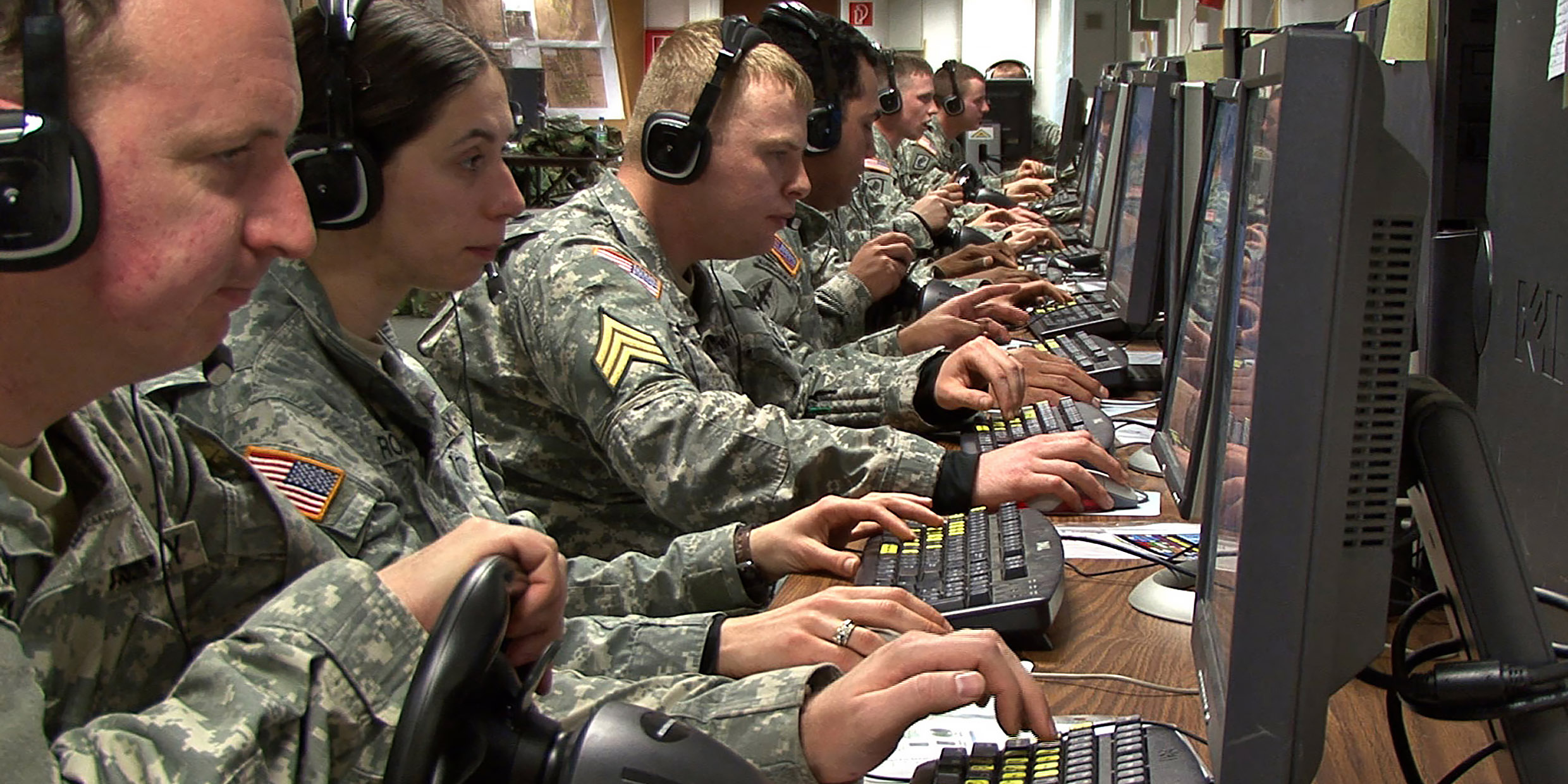Originally published 5 May 1997
The US Marine Corps has awarded a $800,000 contract to MAK Technologies Inc., a Cambridge software firm, to design a computer game for home entertainment and military training. The game will simulate an amphibious assault against an imaginary enemy.
This will not be the first time the military has used computer simulations for training. However, it is the first time they have sought a tie-in with the lucrative civilian computer game market. The Marines are hoping you and I will pick up some of the tab for software development.
The distinction between playing combat computer games and fighting real wars is narrowing. Real-life battles are increasingly fought by soldiers, sailors, and aviators who spend more time in front of computer screens — inside armored vehicles, missile control centers, and cockpits — than facing a flesh-and-blood enemy.
At the same time, computer war games are becoming ever more sophisticated simulations of reality.
The day cannot be far off when the kid who pushes quarters into a virtual reality simulator at the video arcade can have essentially the same visual, aural, and kinetic experiences as the pilot of a real attack aircraft or commander of a real combat tank in a battle situation.
The difference, of course, is that in the computer game nobody actually dies.
All of which leads to the interesting question: Why can’t future wars be fought as computer simulations, thereby avoiding the blood, gore, and property damage of actual conflicts?
Imagine, for instance, that networks of high-speed digital computers had been available for virtual conflicts in 1861:
After weeks of secret battle games on the Confederacy’s most powerful main frame computers, President Jefferson Davis and Secretary of War Leroy Walker make an ominous decision. They order their generals to log onto the international virtual war network and initiate a bombardment of Fort Sumter in Charleston Harbor.
Computer screens light up at the War Department in Washington. Reb alert! A call goes out to the White House. Lincoln snaps open his laptop and watches as powerful computers play out the simulated bombardment. He knows the outcome is not in doubt. The fort must fall.
What surprises Lincoln most is that the Confederacy has chosen to log on and fight. The northern states have vastly superior resources in memory capacity and processor speed. What’s the South up to?
Leading the North’s response to the Sumter bombardment are Generals George “Hacker” McClellan, Ulysses “Data Cruncher” Grant, and George H. Thomas, known for his quick hand on a keyboard.
The South relies on Robert “Megabyte” Lee, the “Macintosh Rebel” Braxton Bragg, and the DOS-head with the goatee, General Joe Johnston.
All of these men had been at the top of their computer classes at West Point. Now they find themselves on opposite sides of the web.
As spring turns into summer, the tide of electronic battle flows back and forth. Northern generals are surprised at the boldness of Southern strategy. The North suffers a setback when Grant, in a moment of inebriation, accidentally deletes data files.
Southern generals are astonished at how quickly untrained Yankee farm boys, sitting at networked terminals, learn to use joysticks. Lee counts on superior modem speeds to anticipate Yankee maneuvers.
In the summer of 1863, a computer crash at a central data processing facility in New York leads to a surprising Southern victory at Gettysburg. The tide of war tips in the Confederacy’s favor. Now it’s only a matter of time as Lee’s commanders point and click their way to triumph. On April 8, 1865, Grant acknowledges defeat and symbolically hands over his mouse to Lee.
The South secedes from the Union and sets up its own web site. Number of actual casualties: zero. Property damage: none.
Of course, this whimsical scenario is completely unrealistic. Real wars seldom result from the kinds of rational decisions that can be programmed into computers. Real wars arise from a mixed bag of human emotions — madness, greed, self-interest, hunger for power, blood lust, religious fanaticism, ethnic hatred, macho swagger — none of which are particularly amenable to computer simulation.
A sufficiently determined aggressor who believes God or history is on his side will not be dissuaded by an electronic simulation, no matter how sophisticated, that predicts he will lose.
And what computer can account for irrational acts of heroism or bravery under fire?
The important question, not yet answered, is this: Will boys and young men of the future satiate their appetite for violence electronically, thereby diminishing the likelihood that innate aggressiveness will lead to actual mayhem? Or will increasingly realistic electronic simulations — those future sons of Doom—be the stimulus for yet greater flesh-and-blood carnage?



